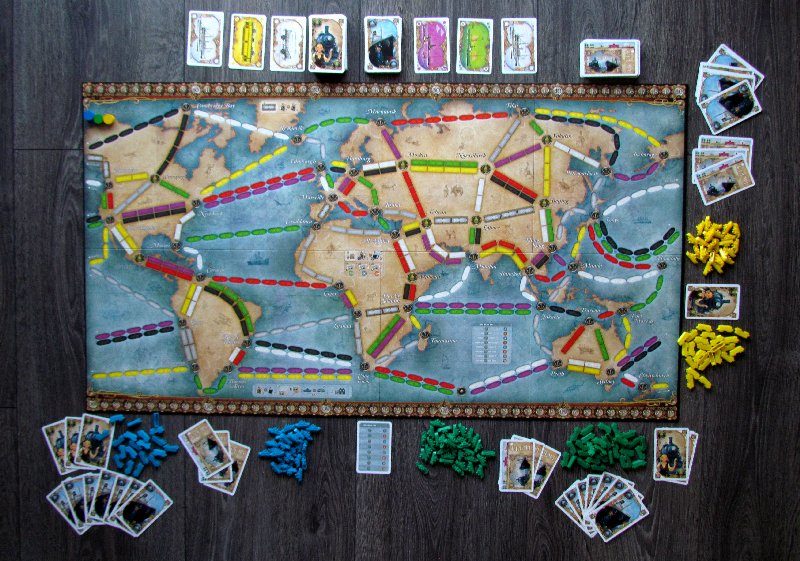

Longer routes are worth progressively more points than shorter routes, e.g., a route of length four is worth more than two routes of length two. The same player may not claim both parallel routes between two adjacent cities. Some cities are connected by two parallel routes that can each be claimed by a different player (unless the game is played by three or fewer players, in which case only one of the routes can be claimed). The routes are of varying lengths (requiring varying numbers of matching coloured cards), and each discrete route marked on the board can be claimed by only a single player. play their collected railway car cards from their hand to claim a route on the board and place the corresponding number of train pieces from their store on the claimed route, thereby earning points.draw three additional destination ticket cards and keep at least one (replacing undesired tickets at the bottom of the stack), or.draw two railway car cards in various colours from the draw piles (with the restriction that drawing a wild Locomotive card face up forfeits drawing another card), or.Each player also selects a group of 45 colored train pieces with a matching scoring marker.Įach turn, the player has to choose from one of three options: Once kept, a destination ticket may not be discarded for the rest of the game. The player must keep at least two of these destination cards and discard unwanted tickets, if any, to the bottom of the stack. These become goals, representing two end-points which players are secretly attempting to connect. They are also dealt three Destination Ticket cards, each of which shows a pair of cities on a map of the United States and southern Canada. 4.6 Ticket to Ride with Alexa Digital AssistantĪt the beginning of the main game, players are dealt four train car cards as their playing hand.


For the song by The Beatles, see Ticket to Ride (song).


 0 kommentar(er)
0 kommentar(er)
